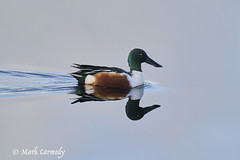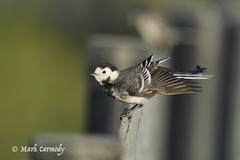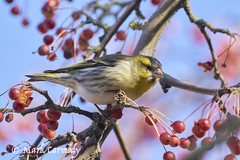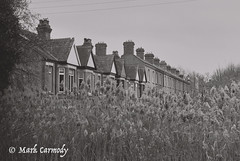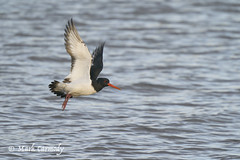
Shorebirds of Ireland, Freshwater Birds of Ireland and The Birds of Ireland: A Field Guide 2nd Edition with Jim Wilson.
www.markcarmodyphotography.com
The oystercatchers are a group of waders forming the family Haematopodidae, which has a single genus, Haematopus. They are found on coasts worldwide apart from the polar regions and some tropical regions of Africa and South East Asia. The exceptions to this are the Eurasian oystercatcher, the South Island oystercatcher, and the Magellanic oystercatcher, which also breed inland, far inland in some cases.
The Eurasian oystercatcher (Haematopus ostralegus) is also known as the common pied oystercatcher, or (in Europe) just oystercatcher. It has striking black and white plumage, a long straight orange-red bill, red eyes and relatively short dull pink legs. The sexes are similar in appearance but the bill of the female is longer than that of the male.
It is the most widespread of the oystercatchers, with three races breeding in western Europe, central Eurosiberia, Kamchatka, China, and the western coast of Korea. No other oystercatcher occurs within this area.
Despite its name, oysters do not form a large part of its diet. The bird still lives up to its name, as few if any other wading birds are capable of opening oysters.
This oystercatcher is unmistakable in flight, with white patches on the wings and tail, otherwise black upperparts, and white underparts. Young birds are more brown, have a white neck collar and a duller bill. The call is a distinctive loud piping.
The bill shape varies; oystercatchers with broad bill tips open molluscs by prising them apart or hammering through the shell, whereas pointed-bill birds dig up worms. Much of this is due to the wear resulting from feeding on the prey. Individual birds specialise in one technique or the other which they learn from their parents. It shows clinal variation with an increase from west to east. The subspecies longipes has distinctly brownish upperparts and the nasal groove extends more than halfway along the bill. In the subspecies ostralegus the nasal groove stops short of the half-way mark. The osculans subspecies lacks white on the shafts of the outer 2–3 primaries and has no white on the outer webs of the outer five primaries. (wikipedia)
In Ireland, approximately 60,000 Oystercatchers spend the winter around the Irish coast, which is a decline of around 28% since the early 2000's. This photograph was taken at Broadmeadows estuary, Co. Dublin.






